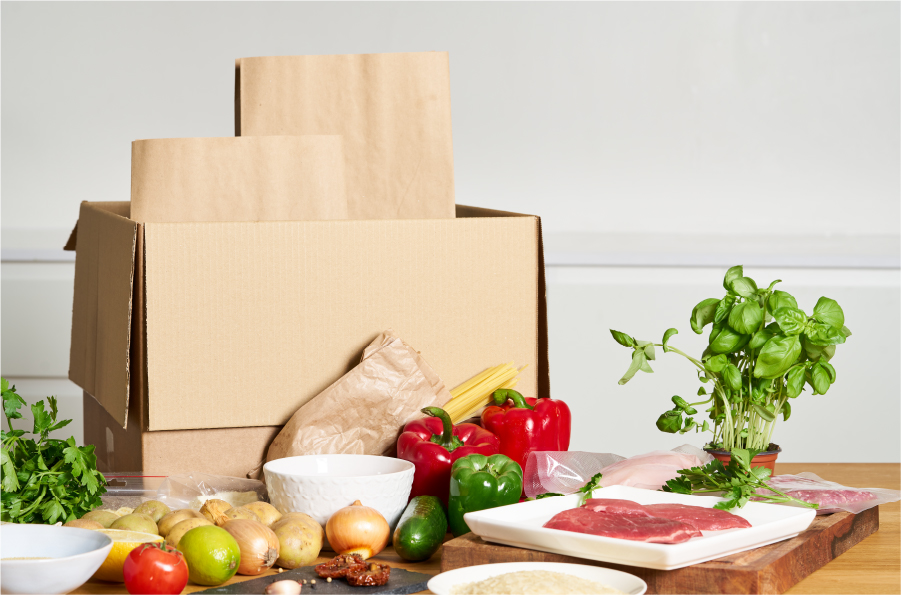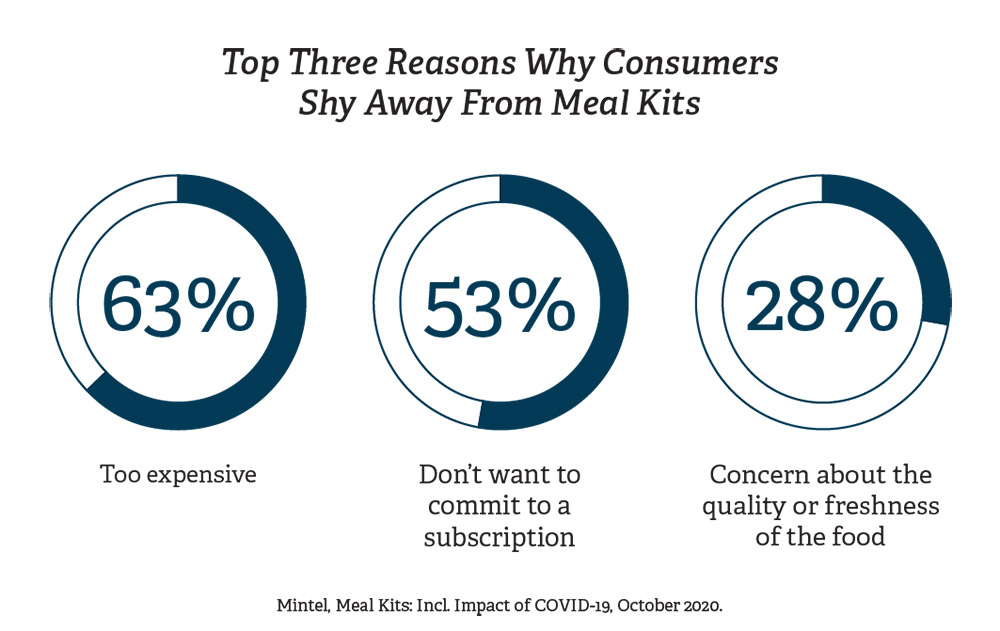
Meal Kits
During the pandemic, consumers’ need for both convenience and inspiration for meals at home caused a boost for meal kit sales.1 While most consider this category to be made of services like Blue Apron and HelloFresh, we’ve also seen an increase in retailer-made meal kits available in-store. For example, at Texas-based retailer H-E-B, their Meal Simple line contains a variety of meals – from steak dinners to soups and sandwiches – available in-store. Some of these items, like the sandwiches, are ready-made and intended to be eaten cold; other items require simple reheating while the majority come with easy instructions for baking.


Omnichannel
Many grocery shoppers turned to curbside or delivery for the first time during the pandemic. Those who had used it before started using it more regularly. In a recent Midan survey, nearly 60% of meat consumers purchased meat online in the month prior – with the most popular online ordering methods being pickup or delivery from a local grocer.2

This has led many retailers to make investments in, and improvements to, their omnichannel retailing experience. In March 2021, Albertsons partnered with Google to “reimagine grocery shopping.” This partnership brings a number of Google’s technologies like Google Pay to the stores but also works toward finding new technologies to make the grocery shopping experience more seamless.3
Regional and smaller store chains are also making investments to expand their omnichannel presence. Discount grocer ALDI added curbside pickup to 500 stores in 20215 and H-E-B opened its first pickup and delivery-only store in San Antonio, fulfilling online orders from a warehouse with no customer access.

As consumers continue working into a new normal, retailers who can make that new reality more convenient will become a regular part of their routine. While consumers have many expectations and they are always changing, meal kits and omnichannel shopping are two that are expected to see growth in 2022.
1 Mintel, Meal Kits: Incl. Impact of COVID-19, October 2020.
2 Midan Marketing, Meat E-Commerce Survey, March 2021.
3 The Shelby Report, Albertsons Cos., Google Partner to Reinvent Future of Grocery Shopping, March 2021
4 Mintel, Grocery Retailing – US, April 2021
5 The Shelby Report, Aldi Continues Expansion With Plans To Open 100 New Stores in 2021, February 2021
This content originally appeared in The Shelby Report.
